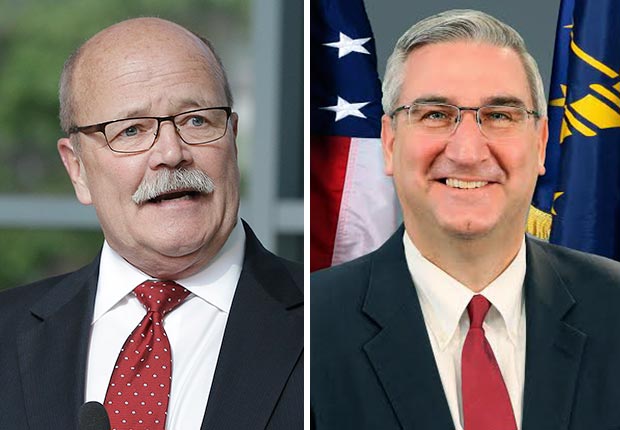AARP Hearing Center

By Nancy Johnson
A political earthquake shook the Indiana landscape this year, with Gov. Mike Pence (R) joining the GOP ticket as vice presidential nominee and last-minute candidates transforming the races for governor and senator.
In the final month before the Nov. 8 election, voters are getting help in making their decisions from a series of critical debates, an AARP voter guide and an AARP campaign pressing congressional candidates to take a stand to strengthen Social Security.
The elections changed dramatically in July. After Pence withdrew from the governor’s race, GOP officials chose Lt. Gov. Eric Holcomb to run against John Gregg (D), an ex-speaker of the House.
In the U.S. Senate race, former Rep. Baron Hill (D) dropped out, and Evan Bayh, a former two-term senator and two-term governor, faces U.S. Rep. Todd Young (R).
“It is unprecedented for Indiana to have this much election-year activity,” said Joseph Losco, codirector of the Bowen Center for Public Affairs at Ball State University in Muncie.
To help Hoosiers learn as much as possible about the issues and candidates, AARP Indiana is working with the independent, nonprofit Indiana Debate Commission, which is broadcasting gubernatorial and Senate debates this fall.
Gubernatorial debates will be held Oct. 3 at the University of Indianapolis and Oct. 25 at the University of Southern Indiana. They will begin at 7 p.m. The Senate candidates will debate Oct. 18, also at 7 p.m., on public television station WFYI in Indianapolis.
For programming information—and an opportunity to submit questions—go to indianadebatecommission.com.
“AARP Indiana’s role in the debates is to shape a great opportunity for Hoosiers to hear where their candidates stand on the issues,” said Sarah Waddle, AARP Indiana state director.
Ambre Marr, state legislative director for AARP, is a member of the debate commission board of affiliates producing the debates, which AARP Indiana is promoting on social media, Waddle added.
AARP does not endorse candidates or give money to campaigns but seeks to inform voters about candidates’ positions on key issues.
Waddle said AARP sees these top issues of concern to older Hoosiers: help for family caregivers; access to home- and community-based services to enable people to age in their homes, rather than in an institutional facility; and protecting financial security.
Through its Take a Stand campaign, AARP is pressing all presidential and congressional candidates to commit to updating Social Security to ensure it is financially sound and can provide adequate benefits. Unless Congress acts, Social Security’s retirement fund could face a nearly 25 percent benefit cut by 2034.
Candidates’ positions are at 2016takeastand.org.
Older voters’ impact
In the governor’s race, Losco said, older voters want someone who will repair roads and bridges, deliver health care in rural areas where jobs and workers are leaving, and improve the state’s economy.
He pointed out that 50-plus voters have clout because they show up at the polls—in Indiana as well as nationwide. In the 2014 election, 52 percent of Hoosiers in their 60s voted, as did 53 percent of those 70 and older—the highest turnout of any age group.
Waddle sees a benefit to this year’s roller-coaster election season in Indiana.
“It shows the importance of being engaged in the process, learning who your candidates are and doing your homework on where the candidates stand,” she said. “It’s keeping Hoosiers on their toes.”
Go to aarp.org/ingovernor for the voter guide to the governor’s race.
Nancy Johnson is a writer living in South Bend.































































